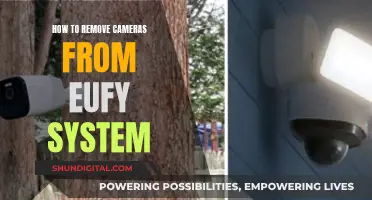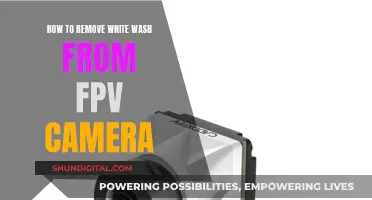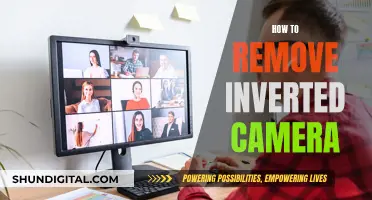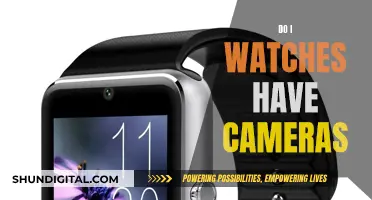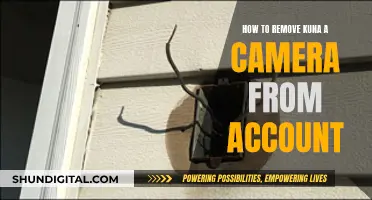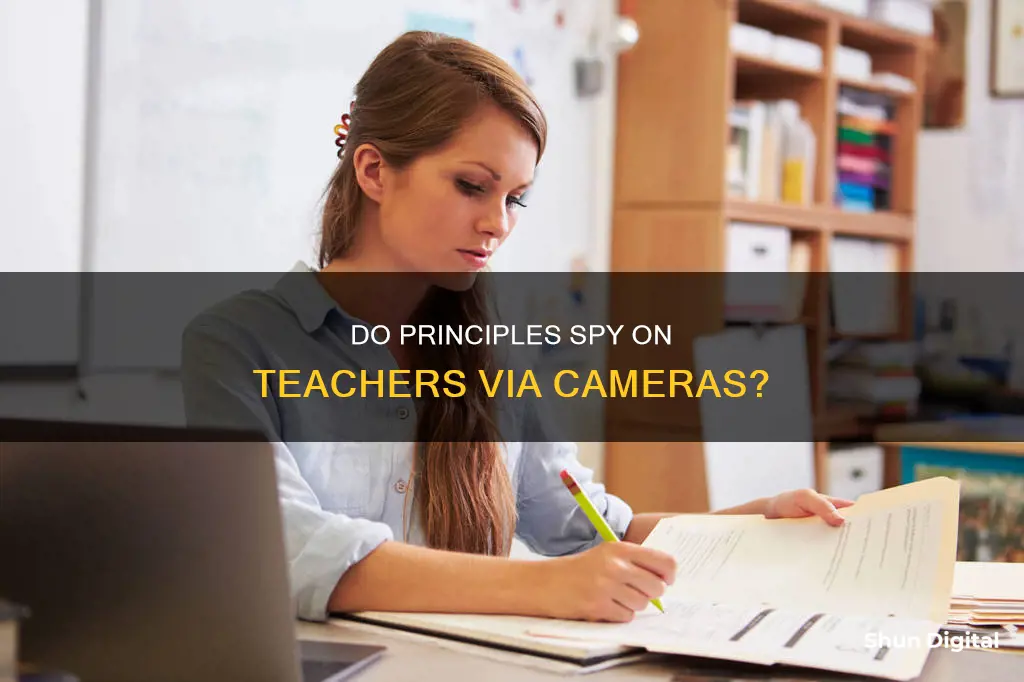
The use of surveillance cameras in schools has sparked debates about balancing campus safety and employee privacy rights. While there are no federal laws governing the electronic surveillance of school employees, court rulings have established the expectation of privacy as a guiding principle in such cases. Video cameras are generally permitted in common areas like hallways, classrooms, and libraries, but not in private spaces like offices, bathrooms, and locker rooms. The interpretation of expectation of privacy varies across states, with some states requiring consent for hidden cameras. While proponents of classroom cameras argue that they improve safety, accountability, and instructional practices, others view them as an invasion of privacy, creating a hostile work environment. Ultimately, the legality of school security cameras depends on state regulations and the reasonable expectations of privacy.
| Characteristics | Values |
|---|---|
| Legality | Legal in the US, but with certain restrictions |
| Camera placement | Allowed in common areas, not in areas with an expectation of privacy (e.g. bathrooms, locker rooms) |
| Visibility | Recommended to be installed in plain view, but some states have stricter laws |
| Parental permission | Generally not required, but some states require consent for specific purposes |
| Audio recording | Some states have restrictions on audio recording |
| Purpose | Safety, security, accountability, and instructional improvement |
| Employee rights | No right to privacy except in specific areas, but employees should be informed |
What You'll Learn
- School principals can use classroom cameras to check in on classes without disrupting lessons
- Video recordings can enable teachers to review their instructional practices
- Cameras in classrooms can help increase teacher accountability
- In the US, there are no federal laws regarding the electronic surveillance of school employees
- Courts have ruled that video cameras are not permitted in areas where privacy is reasonably expected, such as bathrooms and locker rooms

School principals can use classroom cameras to check in on classes without disrupting lessons
The use of security cameras in schools is a growing trend, with cameras increasingly being placed not just in common areas like hallways and cafeterias, but also inside classrooms. This has sparked a debate about the benefits of increased safety and accountability versus the potential invasion of privacy.
Benefits of classroom cameras
Proponents of classroom cameras argue that they can improve safety and accountability, allowing administrators to check in on classes without disrupting lessons. For example, administrators at University Area CDC used to physically check in on classes, but found that students became distracted whenever they visited. They now use cameras to check in on classes remotely, gaining valuable insight without disrupting lessons.
In addition, video recordings can enable educators to review footage and reflect on their instructional practices, and can also serve as a resource for other teachers to improve their planning and instruction.
Legal considerations
While it is generally legal to have security cameras in schools, there are several legal considerations to keep in mind. Firstly, schools should respect "reasonable expectations of privacy". This means that cameras are permissible in areas where there is no reasonable expectation of privacy, such as classrooms, hallways, and libraries, but not in areas where privacy is expected, such as private offices, bathrooms, and locker rooms.
Secondly, some states have stricter laws around hidden surveillance cameras, with states like New Hampshire, Maine, Kansas, South Dakota, and Delaware requiring consent for their use. In general, it is recommended to install security cameras in locations where they are plainly visible.
Thirdly, while schools are usually permitted to record students for safety and educational purposes without parental permission, some states, such as Texas, require parental consent if the footage is to be used for other purposes, such as promotional materials.
Ethical considerations
While the use of classroom cameras can provide benefits in terms of safety, accountability, and instructional improvement, it is important to consider the potential ethical implications. Some teachers may feel that constant surveillance is invasive and disrespectful, particularly if it is done without their consent or knowledge.
In conclusion, while school principals can use classroom cameras to check in on classes without disrupting lessons, it is important to weigh the benefits against potential legal and ethical considerations. Schools should ensure that they are complying with relevant laws, respecting privacy expectations, and communicating their surveillance policies clearly to all stakeholders.
Are You Being Watched? Detect Hidden Cameras
You may want to see also

Video recordings can enable teachers to review their instructional practices
Video recordings can provide teachers with valuable feedback on their teaching methods and classroom management skills. By reviewing the footage, teachers can identify areas where they excel and areas that need improvement. For example, a teacher might notice that their instruction is clear and well-paced but that they need to work on engaging students more actively in the learning process.
Additionally, video recordings can help teachers ensure that their lessons are accessible and effective for all students. For instance, a teacher might realize that they need to vary their teaching strategies to accommodate different learning styles or differentiate instruction for students with special needs.
Video recordings can also be used as a professional development tool. Teachers can share footage with colleagues to get feedback and suggestions for improvement. This can foster a culture of collaboration and continuous learning within the school.
Furthermore, video recordings can be a valuable resource for teacher evaluation and performance reviews. Administrators can use the footage to assess teachers' instructional practices and provide meaningful feedback for growth. This can lead to more informed decisions about professional development opportunities, mentoring programs, or other support systems for teachers.
While video recordings can be a powerful tool for teacher development, it is essential to consider privacy concerns and establish clear guidelines for their use. This includes obtaining the necessary consent, ensuring recordings are stored securely, and respecting areas where there is a reasonable expectation of privacy, such as staff rooms and restrooms.
In conclusion, video recordings offer teachers a unique opportunity to review and reflect on their instructional practices. By analyzing their teaching methods, classroom management, and student engagement, teachers can identify areas of strength and areas for improvement. This self-evaluation process can lead to more effective instruction and a more positive impact on student learning outcomes.
Candid Camera: Best Places to Watch the Show
You may want to see also

Cameras in classrooms can help increase teacher accountability
Video surveillance in schools has been a topic of debate for decades, with some arguing that it is an invasion of privacy, while others see it as a necessary tool for safety and accountability. The use of cameras in classrooms is a more recent practice, and it has sparked discussions about the benefits and drawbacks of allowing principals to watch their teachers on camera. While some teachers may feel uncomfortable being monitored, there are several reasons why cameras in classrooms can help increase teacher accountability.
Firstly, cameras in classrooms can provide a valuable tool for teacher evaluation and feedback. Principals can remotely observe their teachers' performance and provide constructive criticism to help them improve their instructional practices. This can be especially useful for new or struggling teachers who need additional support and guidance. In addition, video recordings can be reviewed by educators themselves, allowing them to reflect on their teaching methods and make necessary adjustments. This self-evaluation can lead to more effective teaching strategies and improved student outcomes.
Secondly, cameras in classrooms can help address safety concerns and reduce liability issues. By having a visual record of what occurs in the classroom, administrators can quickly respond to emergencies, such as fights or medical incidents. Additionally, video evidence can protect teachers from false accusations and provide proof in cases of bullying or harassment. The presence of security cameras may also serve as a deterrent for potential threats, enhancing the overall safety of the school environment.
Furthermore, cameras in classrooms can promote transparency and trust between teachers, administrators, and parents. When used appropriately, video surveillance can demonstrate a school's commitment to accountability and open communication. Parents can feel assured that their children are receiving a quality education, and teachers can showcase their dedication to their profession. However, it is crucial to establish clear policies and guidelines for the use of video surveillance, ensuring that all parties are aware of the purpose and limitations of the cameras.
While cameras in classrooms can have benefits, it is essential to respect the privacy of teachers and students. Courts in the United States have established the "expectation of privacy" as a guiding principle in electronic surveillance cases, prohibiting cameras in areas where privacy is reasonably expected, such as restrooms and locker rooms. Schools should also ensure that teachers are aware of the video surveillance and provide proper signage to deter any inappropriate behavior.
In conclusion, cameras in classrooms can help increase teacher accountability by providing a tool for evaluation and feedback, enhancing safety and reducing liability, and promoting transparency and trust. However, it is crucial to balance these benefits with the right to privacy, ensuring that video surveillance is used ethically and responsibly.
Can Principals Monitor Teachers Through Surveillance Cameras?
You may want to see also

In the US, there are no federal laws regarding the electronic surveillance of school employees
In the US, there is no federal legislation governing the electronic surveillance of school employees. However, this does not mean that there are no rules about installing cameras in classrooms. The Fourth Amendment of the US Constitution protects citizens against warrantless searches and surveillance, and the 1967 Supreme Court ruling in Katz v. United States established the "expectation of privacy" as the guiding principle in electronic surveillance cases. This means that while video cameras are permissible in common areas of schools, such as hallways, classrooms, and libraries, they are deemed improper in areas where privacy can be reasonably expected, such as private offices, bathrooms, and locker rooms.
The "expectation of privacy" concept has been interpreted differently by various courts. For example, in Plock v. Board of Education, the Ohio Court of Appeals found that teachers who sued their board for installing audio-visual recording devices in classrooms were wrong because a classroom in a public school building is not intended for a teacher's exclusive, personal use, and therefore, they could not have a reasonable expectation of privacy. Similarly, in Roberts v. Houston Independent School District, the Texas Court of Appeals ruled that a teacher could be fired based on evidence of poor performance recorded by a disputed classroom video system.
In addition to federal law, state laws and local policies also govern the use of security cameras in schools. For example, some states, such as New Hampshire, Maine, Kansas, South Dakota, and Delaware, require consent for the use of hidden cameras. Schools should also have a clear and published video surveillance policy to avoid the risk of liability and claims of discriminatory enforcement.
The use of security cameras in schools is a controversial topic. Proponents argue that cameras can improve safety and accountability, help thwart dangerous situations, and increase teacher accountability. On the other hand, critics argue that employee monitoring can create a sense of distrust and negatively impact morale, motivation, and job satisfaction.
In conclusion, while there is no federal law specifically governing the electronic surveillance of school employees, the Fourth Amendment and the "expectation of privacy" principle set by the Supreme Court guide the use of video surveillance in schools. State laws and local policies also play a role in regulating the use of security cameras in schools. The debate around this issue centres on balancing safety and accountability with privacy and trust.
Is My Camera Watching Me?
You may want to see also

Courts have ruled that video cameras are not permitted in areas where privacy is reasonably expected, such as bathrooms and locker rooms
The use of video cameras in schools and workplaces has become an increasingly common practice, raising questions about the legality of such surveillance and the privacy rights of those being monitored. While there is no specific federal law governing the use of security cameras, courts have ruled that individuals have a "reasonable expectation of privacy" in certain areas, such as bathrooms and locker rooms. This means that video cameras are not permitted in these locations, and installing them would violate privacy rights.
The concept of "reasonable expectation of privacy" was established in the 1967 Supreme Court ruling in Katz v. United States, which set a precedent for electronic surveillance cases. This principle has been applied by courts across the country to determine what constitutes acceptable surveillance. For example, in the case of Plock v. Board of Education, the Ohio Court of Appeals found that teachers did not have a reasonable expectation of privacy in classrooms, as they are not intended for exclusive personal use. Similarly, in Roberts v. Houston Independent School District, the Texas Court of Appeals ruled that a teacher could be fired based on evidence of poor performance recorded by a classroom video system.
In the context of schools, courts have generally permitted video cameras in common areas such as hallways, classrooms, and libraries, where privacy is not typically expected. However, when it comes to areas like private offices, bathrooms, and locker rooms, electronic surveillance has been deemed improper due to the reasonable expectation of privacy. This expectation of privacy varies from state to state, with some states having stricter laws regarding hidden cameras and consent. For example, states like New Hampshire, Maine, Kansas, South Dakota, and Delaware require consent for the use of hidden cameras in any form.
While there may be no federal laws explicitly prohibiting video surveillance in public spaces, workplaces, or schools, the Fourth Amendment of the United States Constitution addresses the issue by guarding individuals against unreasonable or unwarranted searches and seizures. Additionally, the amendment requires search warrants to be sanctioned by a court, which decides whether there is probable cause for their issuance.
In summary, courts have consistently ruled that video cameras are not permitted in areas where privacy is reasonably expected, such as bathrooms and locker rooms. This expectation of privacy is a guiding principle in determining the legality of surveillance and helps protect the privacy rights of individuals in schools and workplaces.
School Bus Camera Footage: Who's Watching?
You may want to see also
Frequently asked questions
Yes, principles can watch their teachers on camera. However, there are varying state laws and regulations regarding the use of surveillance cameras in schools.
Video recordings can enable principles to provide feedback to teachers and help them improve their instructional practices. Videos can also be used as a resource for other teachers to enhance their planning and instruction. Additionally, security cameras in classrooms can improve safety and protection from liability.
The use of surveillance cameras in schools raises privacy concerns for teachers. Teachers may feel violated, uncomfortable, or intimidated by constant monitoring. Additionally, there may be legal restrictions on the use of cameras in certain areas of the school, such as private offices, bathrooms, and locker rooms.


